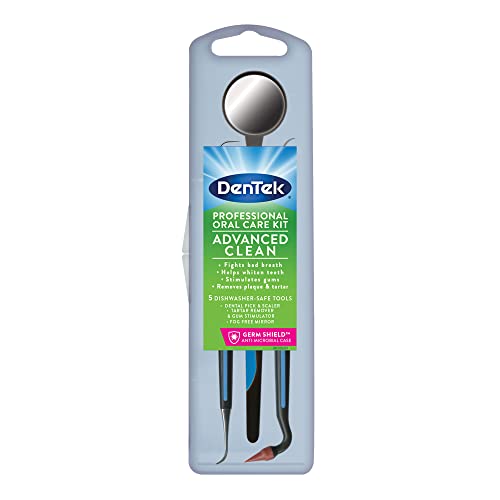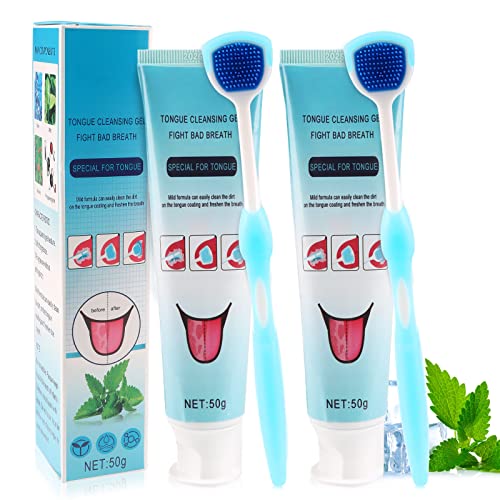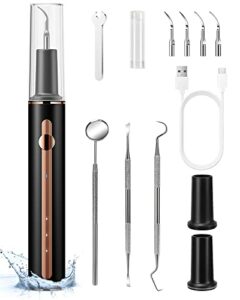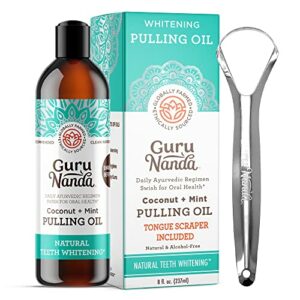In this step-by-step guide, we will walk you through the process of effectively getting rid of tongue bacteria. We understand that having an unhealthy tongue can lead to bad breath and discomfort, so we aim to help you improve your oral hygiene. By following our instructions, you will learn how to properly clean your tongue and maintain a fresh and healthy mouth. Let’s get started!
Improving Oral Health with Tongue Cleaning
Step 1: Gather necessary tools
Step 1: Gather necessary tools.
To effectively clean your tongue, you will need to collect a tongue scraper or toothbrush and a suitable mouthwash or saline solution. These tools are essential in removing bacteria and debris from the surface of your tongue, ensuring a fresh and healthy mouth.
Here’s what you need to do:
- Obtain a tongue scraper or toothbrush: Look for a tongue scraper or a toothbrush with a built-in tongue cleaner at your local pharmacy or supermarket. These tools are specifically designed to reach the back of your tongue, where most of the bacteria tend to accumulate. If you prefer using a toothbrush, choose one with soft bristles to avoid causing any discomfort or irritation to your tongue.
- Select a suitable mouthwash or saline solution: Opt for a mouthwash that is specifically formulated for tongue cleaning or a saline solution. Mouthwashes containing antibacterial properties are particularly effective in killing the bacteria responsible for bad breath and maintaining oral hygiene. If you prefer a more natural approach, you can create a saline solution by dissolving half a teaspoon of salt in a cup of warm water.
Remember, by using a tongue scraper or toothbrush and a suitable mouthwash or saline solution, you are taking a proactive step towards improving your oral hygiene. These tools will help remove bacteria and debris from your tongue, leaving you with a fresh and clean feeling in your mouth.
Step 2: Prepare the tongue scraper or toothbrush
To prepare the tongue scraper, first, make sure it is clean and free from any debris. Inspect the scraper for any signs of dirt, residue, or build-up. If you notice any, wash it thoroughly with warm water and mild soap. Rinse it well to ensure all soap is removed. You can also use an antibacterial mouthwash to sanitize the scraper before use.
If you prefer using a toothbrush for tongue cleaning, ensure that it is soft-bristled and designated for this purpose. Look for a toothbrush with gentle bristles that are specially designed for cleaning the tongue. Avoid using toothbrushes with hard or stiff bristles, as they may cause discomfort or even damage to the delicate tissues of the tongue. Before using the toothbrush, rinse it under warm water to remove any loose bristles or debris that may have accumulated. It is also recommended to sanitize the toothbrush by soaking it in an antibacterial mouthwash or using a toothbrush sanitizer.
Step 3: Rinse your mouth
To effectively rinse your mouth, follow these simple steps:
- Take a small sip of mouthwash or saline solution.
- For example, you can use an alcohol-free mouthwash like Listerine Zero or a saline solution made by mixing 1/2 teaspoon of salt in 8 ounces of warm water.
- Swish the liquid around your mouth for approximately 30 seconds.
- Make sure to move the liquid around all areas of your mouth, including your cheeks, gums, and tongue.
- You can gently tilt your head back and forth or side to side to reach different areas.
- Focus on your tongue to loosen any bacteria.
- As you swish the mouthwash or saline solution, pay special attention to your tongue.
- Move the liquid back and forth over your tongue to help dislodge any bacteria or debris that may be present.
Remember, the purpose of this step is to remove any remaining bacteria and debris from your mouth. By following these instructions and using either mouthwash or saline solution, you can effectively rinse your mouth and maintain good oral hygiene.
Step 4: Clean your tongue
Hold the tongue scraper or toothbrush firmly in your hand, making sure you have a good grip. Gently position the scraper or brush on the surface of your tongue, towards the back. With a steady hand, scrape or brush the surface of your tongue using a firm but gentle motion, moving from the back towards the front. This action helps to remove the bacteria that can accumulate on your tongue throughout the day.
Repeat this scraping or brushing motion several times to ensure effective removal of bacteria. As you scrape or brush, be careful not to apply too much pressure, as this may cause discomfort or irritation. It’s important to find a balance between being firm enough to remove the bacteria and being gentle enough to avoid any discomfort. Remember, the goal is to clean your tongue thoroughly without causing any harm or discomfort.
For example, imagine you are using a tongue scraper. Hold it firmly and gently scrape the surface of your tongue from the back towards the front, repeating the motion a few times. You may notice a white or yellowish residue being removed from your tongue as you scrape. This is a sign that the bacteria and debris are being effectively removed. By thoroughly cleaning your tongue, you can help reduce bad breath and promote better oral hygiene overall. So remember, hold the tongue scraper or toothbrush firmly, and gently scrape or brush from back to front, repeating the motion several times for a clean and fresh tongue.
Step 5: Rinse and repeat
After each scrape or brush, rinse the tongue scraper or toothbrush under running water to remove any accumulated bacteria. This step is crucial to ensure that you are not reintroducing bacteria back onto your tongue during the cleaning process. Simply hold the tool under a stream of running water and gently rub off any residue or debris. Make sure to pay attention to all the crevices and bristles, as these areas can easily trap bacteria. Rinse thoroughly until the water runs clear, indicating that the scraper or toothbrush is clean and ready for the next round of cleaning. By diligently rinsing the tool after each scrape or brush, you are taking an important step towards maintaining good oral hygiene and preventing the buildup of bacteria on your tongue.
Continue the cleaning process until your tongue feels clean and refreshed. This may take several rounds of scraping or brushing, depending on the amount of buildup on your tongue. Start at the back of your tongue and gently move the scraper or toothbrush forward, applying light pressure. Make sure to cover the entire surface of your tongue, including the sides and the tip. As you scrape or brush, be mindful of any discomfort or gag reflex and adjust the pressure accordingly. Remember, the goal is to clean and refresh your tongue, not to cause any pain or discomfort. Keep going until your tongue feels clean and free from any residue or coating. This will not only leave your mouth feeling refreshed, but it will also help maintain optimal oral health.
Maintaining Oral Hygiene for Optimal Health
In conclusion, we have explored the various methods to effectively get rid of tongue bacteria. By regularly cleaning your tongue using a tongue scraper or toothbrush, and incorporating a suitable mouthwash or saline solution into your oral hygiene routine, you can significantly reduce the bacteria on your tongue and enhance your overall oral health. Remember, maintaining a clean and healthy tongue is essential for preventing bad breath and promoting a fresh and confident smile. So, let’s prioritize our oral hygiene and bid farewell to those pesky tongue bacteria for good!
Simple Solutions for Fresh Breath
Instructions for Proper Tongue Cleaning
- First, wet the tongue cleaner with water to make it easier to glide over the tongue
- Stand in front of a mirror and gently stick out your tongue
- Place the tongue cleaner at the back of your tongue and gradually move it forward towards the tip
- Apply gentle pressure and scrape the cleaner along the surface of the tongue, making sure to cover the entire surface
- Rinse the tongue cleaner with water after each scrape to remove accumulated debris
- Repeat the scraping motion 3-5 times, or as needed, until the tongue feels clean
- Finish by rinsing your mouth thoroughly with water or mouthwash to remove any remaining debris
- Clean the tongue cleaner with water and store it in a clean, dry place for future use
Frequently Asked Questions about Tongue Cleaning
Can tongue cleaning help prevent the formation of plaque and tartar?
Yes, tongue cleaning can help prevent the formation of plaque and tartar. Plaque is a sticky film of bacteria that can build up on the teeth and gums. By cleaning the tongue, we can remove some of the bacteria that contribute to plaque formation. Additionally, a clean tongue helps maintain a healthier oral environment, reducing the chances of tartar formation. Tartar, or calculus, is hardened plaque that cannot be removed by brushing alone and can lead to gum disease if left untreated. Regularly cleaning the tongue along with brushing and flossing can therefore be beneficial in preventing the accumulation of plaque and tartar.
What are the potential benefits of regular tongue cleaning?
Regular tongue cleaning can offer several potential benefits for our oral health. Firstly, it helps remove the buildup of bacteria, food particles, and dead cells that can accumulate on the surface of our tongue. This, in turn, can help improve our breath by reducing the amount of odor-causing compounds present in our mouth.
Furthermore, by removing this buildup, regular tongue cleaning can also contribute to maintaining good overall oral hygiene. It can help prevent the formation of plaque on our teeth, which is a sticky film containing harmful bacteria. By reducing the amount of bacteria in our mouth, we can potentially decrease the risk of developing dental issues such as tooth decay and gum disease.
Moreover, keeping our tongue clean can also enhance our sense of taste. A cleaner tongue allows our taste buds to function more effectively, enabling us to fully enjoy the flavors of the food we eat.
While there is no definitive scientific evidence linking tongue cleaning to specific health benefits beyond those mentioned, many individuals find it to be a refreshing and invigorating addition to their oral hygiene routine.
It is important to note that tongue cleaning should be done gently to avoid causing any discomfort or damage. Using a tongue scraper or a soft-bristled toothbrush, we can gently clean the surface of our tongue from the back to the front, rinsing the scraper or brush between strokes.
As always, it is advisable to consult with a dental professional for personalized advice on oral care practices that suit our individual needs.













![How to get rid of tongue bacteria? 12 NatureWise Oral Health Chewable Probiotics | Supports Healthy Teeth, Gums, & Better Breath | Ear, Nose, Throat Immunity for Kids & Adults | Sugar-Free Natural Mint Flavor [2 Month Supply - 50 Tablets]](https://m.media-amazon.com/images/I/41vQGzhKsFL.jpg)









